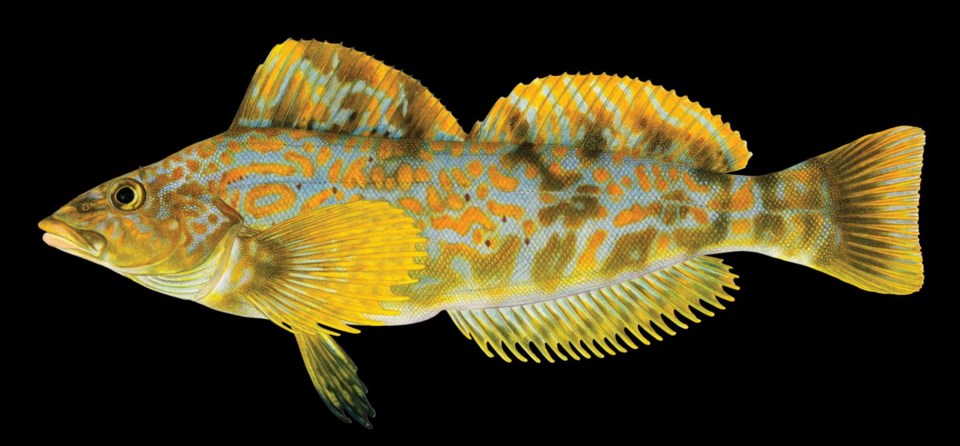Southern fish are showing up near Victoria in unexpected numbers, say ocean biologists at the University of Washington.
Prof. Ted Pietsch, with help from local sources including the Royal B.C. Museum, recently compiled a survey study called Fishes of the Salish Sea, the first of its kind in 35 years. It turned up 253 fish species — 37 more than were found in the last similar survey, completed in 1980.
Among the newcomers are the Pacific viperfish, northern flashlightfish and longsnout prickleback.
“It’s very cool,” said Gavin Hanke, curator of vertebrates at the Royal B.C. Museum.
“I’m not surprised that he has found new species, but this is a lot,” said Hanke, who assisted Pietsch with data and specimens. “That’s way more than I would have expected.”
Biological surveys have well documented the bird and mammal species. But it’s been decades since anybody surveyed fish, let alone mapped their distributions.
Pietsch said in an interview that the northward movement of fish typically found in more southern Pacific waters — off California, for example — has been seen for several years. But the number of southern species in the Salish Sea was a surprise.
“It’s a lot of stuff that is coming up from down south and entering the strait of Juan de Fuca and finding nice places to live and set up shop in the Salish Sea,” he said.
His work, completed with Jay Orr, a fisheries biologist with the Alaska Fisheries Science Center, examined the Salish Sea, also called the Inland Marine Waters of Washington and B.C., which takes in Juan de Fuca Strait, the Strait of Georgia, the Gulf Islands, the San Juan Islands and Puget Sound.
The area forms a system that is in some ways closed off from the Pacific, with slightly warmer waters and different currents.
As a result, southern species appearing now are likely to remain, Pietsch said. “We think in most places they will become residents in our waters even if things turn a little colder again,” he said. “There are so many isolated bodies of water within the restricted areas of the Salish that would not be as cold as the oceanic currents outside.”
The study, available online and soon to be published as a book, will be of primary interest to ocean or fisheries biologists. Besides the full scientific names and distribution patterns, it will also include a few selected drawings.
But Pietsch said it’s hoped the study can be expanded to a volume documenting all the fish species, with illustrations of every one. Such a book could be used as a field guide for commercial fishermen, anglers, sport divers or just interested members of the public to identify and watch for marine animals.
“We are really anxious to get this book out because there is nothing really out there now for local people in our part of the world to learn about Salish waters,” Pietsch said.
“It’s quite amazing what’s out there. It’s also amazing how truly beautiful our fish really are.”



